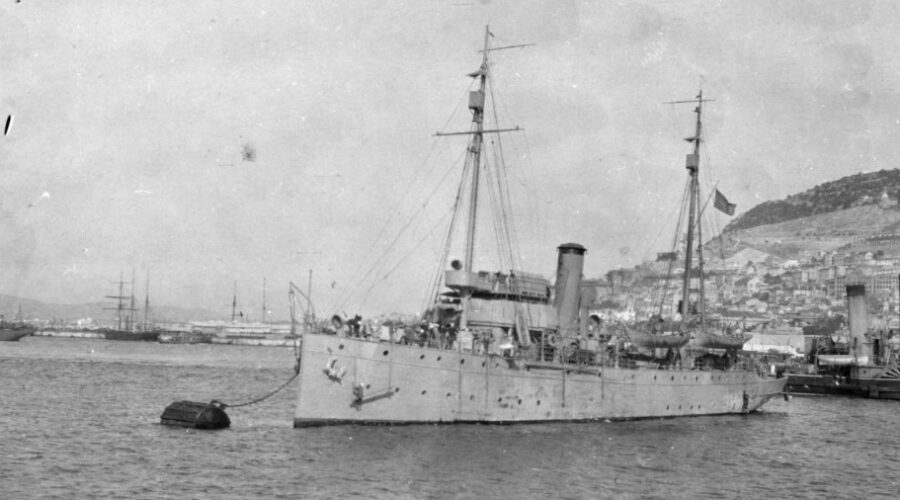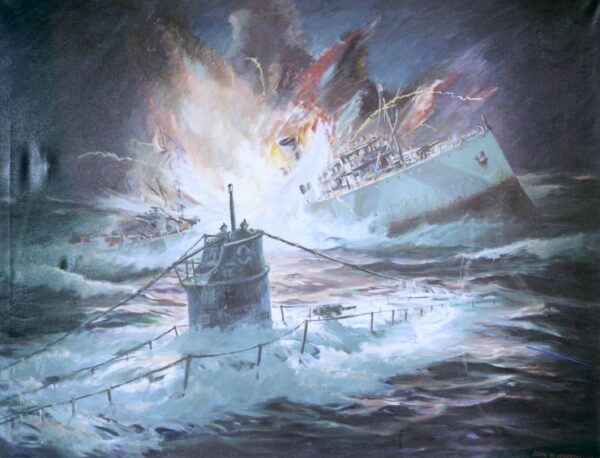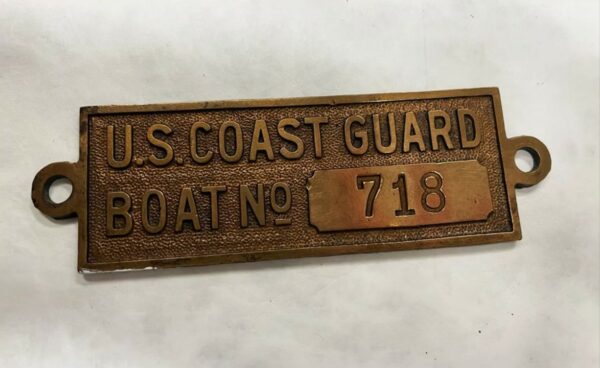
The only remnant of a sunken Coast Guard cutter
By Renee Coleman, National Coast Guard Museum (NCGM) director of public affairs
Breadcrumbs
Subpage Navigation
Amongst the stacks and rows of the Coast Guard Heritage Asset Collection is a dollar bill-sized placard so unassuming that easily overlooked. Measuring just a smidge under 4 inches in height, a tad bit over 12 inches in width, and a mere 0.3 inches in depth, this bronze placard is the only verified artifact from the Coast Guard Cutter Tampa, which sank in September 1918 off the coast of Wales, just before the end of World War I.

Credit: Coast Guard Collection
A depiction of the Tampa, torpedoed and sunk with all hand on board by a German submarine while escorting a convoy in the Bristol Channel, September 1918.
PA2 Andrew Tompkins, the curatorial historian for the National Coast Guard Museum, holds this placard very near and dear to his heart and ranks it as one his favorite pieces in the collection.

The bronze placard is the only verified artifact from the Coast Guard Cutter Tampa, which sank in September 1918 off the coast of Wales, just before the end of World War I.
“This placard is arguably the most impactful artifact in the collection from World War I,” he said. “It represents a significant loss of life. We lost 111 Coast Guard service members, four Navy personnel, five civilians and 11 members of the British Royal Navy.”
The sequence of events that led the placard back to the United States is still something of a slight mystery, but over the decades the story has slowly been pieced together, save for some time gaps.
“It washed up on a beach in 1924 in Porthcawl, which is a town in Wales,” Tompkins said. “It was found by a local resident, and the placard was still attached to a piece of wood from the Tampa’s original lifeboat.”
The placard was verified as belonging to the Tampa because of its standard size and shape, and it holds an identification number that can only match the Tampa.
Somehow, someway the placard was returned from the United Kingdom to the United States shortly after its discovery, and eventually returned to the Coast Guard for safekeeping.
“Every other artifact, that I know of, we’ve gone out to find,” Tompkins said. “This is the only artifact that has come to us. It broke free from the Tampa and literally rose from the depths of the Atlantic to come back to us, and that’s part of what makes this piece so incredibly special.”
National Coast Guard Museum insider tip: Visitors will have the opportunity to see the Tampa plaque in person, and learn more about the cutter’s fateful story in the World War 1 exhibit in the Defenders of our Nation wing of the museum.
